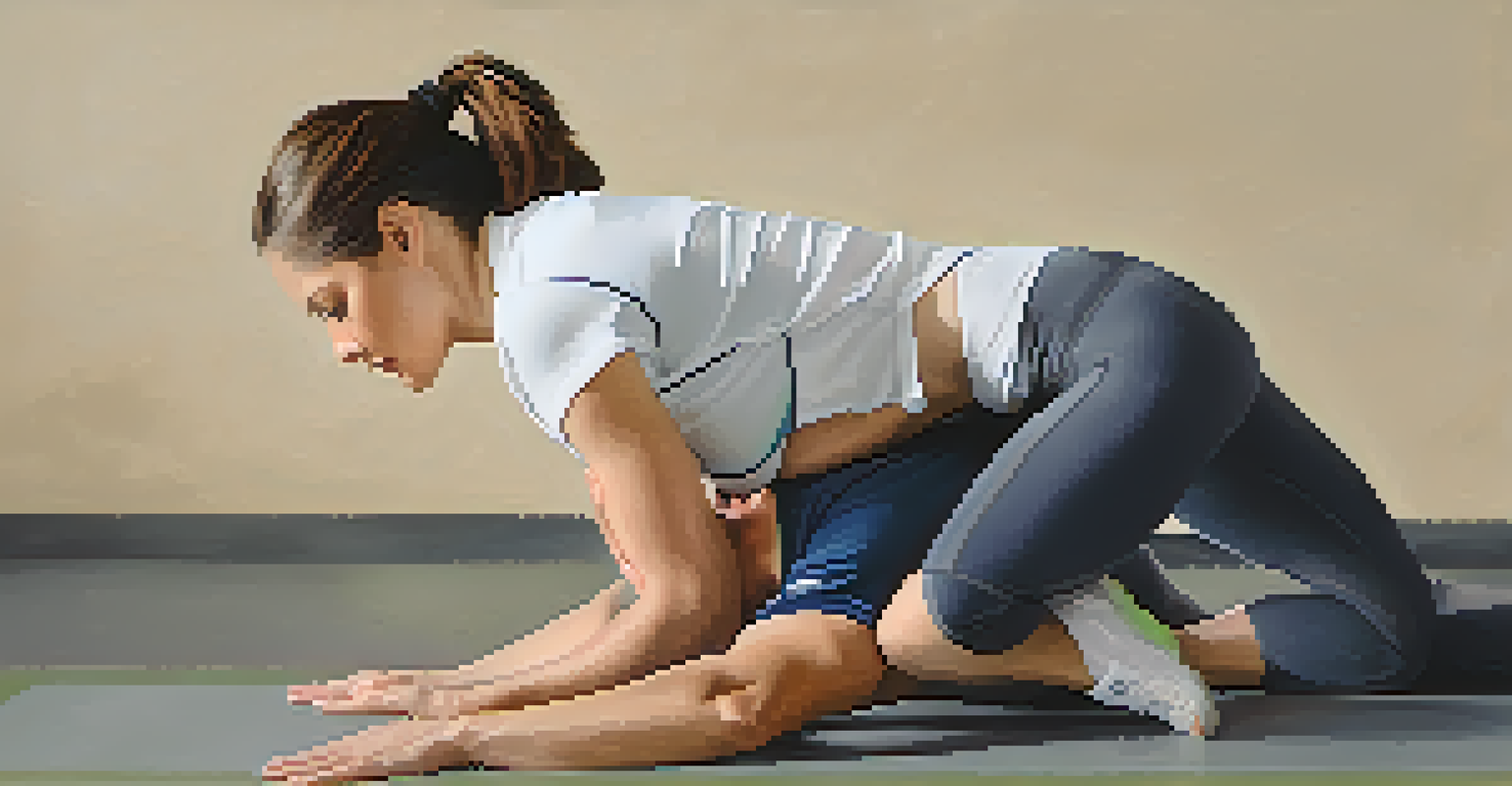Stretching Techniques: Improve Flexibility and Recovery

Understanding the Importance of Flexibility in Fitness
Flexibility is a crucial aspect of overall fitness that often gets overlooked. It allows your muscles and joints to move through their full range of motion, which is essential for optimal performance in any physical activity. Imagine trying to play your favorite sport with tight muscles—it’s like trying to drive a car with the handbrake on; it just won't perform at its best.
Flexibility is the key to stability.
Improved flexibility can help prevent injuries, reduce muscle soreness, and enhance your recovery after workouts. When your body is flexible, it can absorb shock better and distribute forces evenly, reducing the risk of strains and sprains. Think of flexibility as the oil in a car engine; without it, everything runs less smoothly.
Incorporating stretching into your routine is not just about bending like a pretzel; it’s about enhancing your overall fitness experience. Whether you’re a seasoned athlete or a weekend warrior, making flexibility a priority can lead to noticeable improvements in your performance and recovery.
Dynamic Stretching: Warming Up with Movement
Dynamic stretching is a fantastic way to warm up your body before a workout. Unlike static stretching, which involves holding a position, dynamic stretching incorporates movement and helps increase blood flow to your muscles. Picture yourself swinging your arms and legs like a pendulum—this method prepares your body for the activity ahead.

Examples of dynamic stretches include leg swings, arm circles, and walking lunges. These movements not only improve flexibility but also enhance coordination and balance. It’s like getting your engine revved up before hitting the road; you want to ensure everything is running smoothly.
Flexibility Boosts Performance
Improving flexibility enhances your overall performance, prevents injuries, and aids recovery after workouts.
Adding dynamic stretches to your pre-workout routine can enhance your performance and decrease the likelihood of injuries. It’s a simple yet effective way to signal your body that it’s time to get moving and ready for action.
Static Stretching: The Key to Post-Workout Recovery
After a workout, static stretching becomes your best friend, helping to relax and lengthen muscles that have been under tension. This technique involves holding a stretch for a period, usually between 15 to 60 seconds. It’s like letting your car cool down after a long drive; it’s essential for keeping everything in good condition.
The body achieves what the mind believes.
Common static stretches include hamstring stretches, quadriceps stretches, and shoulder stretches. By focusing on these areas, you can alleviate tightness and promote flexibility. Think of it as giving your muscles a well-deserved break after their hard work.
Incorporating static stretching into your post-workout routine not only aids recovery but also enhances overall flexibility over time. It’s a simple practice that can yield significant benefits, helping you feel more relaxed and ready for your next challenge.
Proprioceptive Neuromuscular Facilitation (PNF) Stretching
PNF stretching is a more advanced technique that combines stretching and contracting of the targeted muscle group. This method involves a partner or a prop to provide resistance and help you stretch even further. Imagine a personal trainer assisting you with a stretch; they help you push your limits safely.
Typically, PNF stretching consists of alternating between stretching the muscle and then contracting it. For example, if you're stretching your hamstrings, you would extend your leg, push against resistance, and then relax deeper into the stretch. This method can significantly improve flexibility and is often used in rehabilitation settings.
Dynamic vs. Static Stretching
Dynamic stretching is great for warming up, while static stretching is essential for post-workout recovery.
While PNF stretching can be incredibly effective, it's important to approach it with caution and ideally under the guidance of a trained professional. It’s a powerful tool in your flexibility arsenal, enabling you to explore new ranges of motion.
Incorporating Stretching into Your Daily Routine
Making stretching a regular part of your daily routine can yield long-term benefits. Whether you take five minutes to stretch in the morning or dedicate time after your workouts, consistency is key. Think of it like brushing your teeth; it’s a small daily task that leads to significant health benefits.
You don’t need an elaborate routine; even simple stretches can make a difference. Setting reminders or integrating stretching into your daily activities, like while watching TV, can help you stay on track. It’s about finding those small pockets of time to prioritize flexibility.
As you continue to stretch regularly, you’ll likely notice improvements in your overall mobility and recovery. Just remember that like any fitness goal, patience and persistence are essential.
The Role of Breathing in Effective Stretching
Breathing plays a crucial role in enhancing the effectiveness of your stretching routine. By focusing on deep, controlled breaths, you can help relax your muscles and increase the depth of your stretches. Think of your breath as a calming wave, washing over your body and easing tension.
Inhale deeply as you prepare to stretch, and exhale slowly as you ease into the position. This rhythm not only promotes relaxation but also serves as a mental cue for your body to let go of tightness. It’s like creating a peaceful atmosphere that encourages your muscles to cooperate.
Listen to Your Body
Paying attention to your body's signals during stretching is crucial to avoid injuries and improve flexibility safely.
Incorporating mindful breathing into your stretching practice can enhance your overall experience, making it more enjoyable and effective. It’s a simple technique that can transform your stretching routine into a more holistic practice.
Listening to Your Body: Stretching Safely
Listening to your body is paramount when it comes to stretching. Each individual’s flexibility level is different, and pushing yourself too hard can lead to injuries. Imagine your body as a finely tuned instrument; it requires gentle handling to produce beautiful music.
Pay attention to any discomfort or pain during stretching. It’s normal to feel a gentle pull, but sharp pain is a warning sign. This is your body’s way of communicating that you may need to ease off or modify your approach. Always prioritize safety over intensity.

By practicing safe stretching techniques and being aware of your body’s limits, you can enjoy the benefits of increased flexibility without the risk of injury. Remember, it’s a journey, and every small step counts.